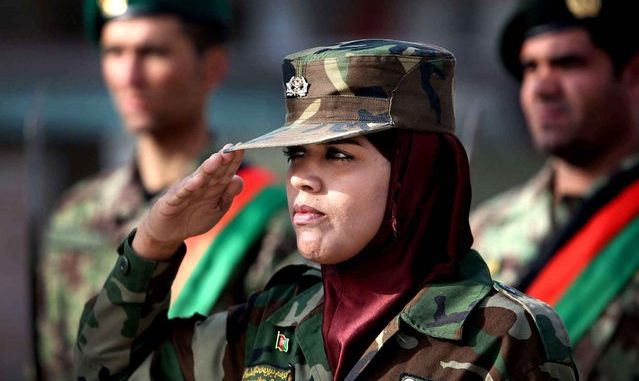
New Delhi: The Indian armed forces are doing all they can to ensure gender equality not only in India but also abroad. Even as three young women were commissioned to become India’s first women fighter pilots, the Indian Army is now preparing to train about 100 Afghan women to serve in the Afghan National Army (ANA).
According to a Pentagon report submitted to the US Congress on Friday, the Afghanistan government has earmarked about $2 million for pilot projects to train ANA women soldiers. While the first batch, comprising non-commissioned officers and soldiers, will be trained in Antalya, Turkey, from on May 30 onwards, the Indian Army will train nearly 100 in August.
The Afghanistan government and the ANA are developing out of country training programmes for female ANA soldiers to raise the number of women soldiers and promote gender equality.
At present, there are 820 women manning various posts in the ANA and the Afghan Air Force (AAF). India and Afghanistan share a close bilateral relationship and had inked a strategic partnership agreement in 2011.
Under the agreement, in the first half of 2015, India gifted three Cheetal helicopters to Afghanistan. Produced by Hindustan Aeronautics Limited, Cheetals are the indigenous version of the Cheetah light utility multi-role choppers.
By May 31, 2016, three of the four Mi-35 attack choppers promised to Afghanistan in December 2015 had been delivered, marking the first time lethal equipment had been supplied to India’s neighbour and expected to aid the country’s effort against the Taliban and other insurgents.
Till last month, the fledgling AAF has about 104 different types of airframes at its disposal which are flown by 160 trained pilots.
In the past, Afghanistan had sought India’s help to acquire battle hardware and equipment including artillery guns and tanks.
The Pentagon report on enhancing security and stability in Afghanistan focuses also on the al Qaeda’s core leadership in the Af-Pak border region, which though degraded, continues to be alive and kicking with elements continuing “to seek safe haven on both sides of the border to regenerate and conduct attack planning”.
The report says: “The continued development of an al Qaeda affiliate in the region, Al Qaeda in the Indian Subcontinent (AQIS), highlights the dynamic nature of the terrorist and militant landscape in the region.”
Source: Deccan Chronicle

Leave a Reply